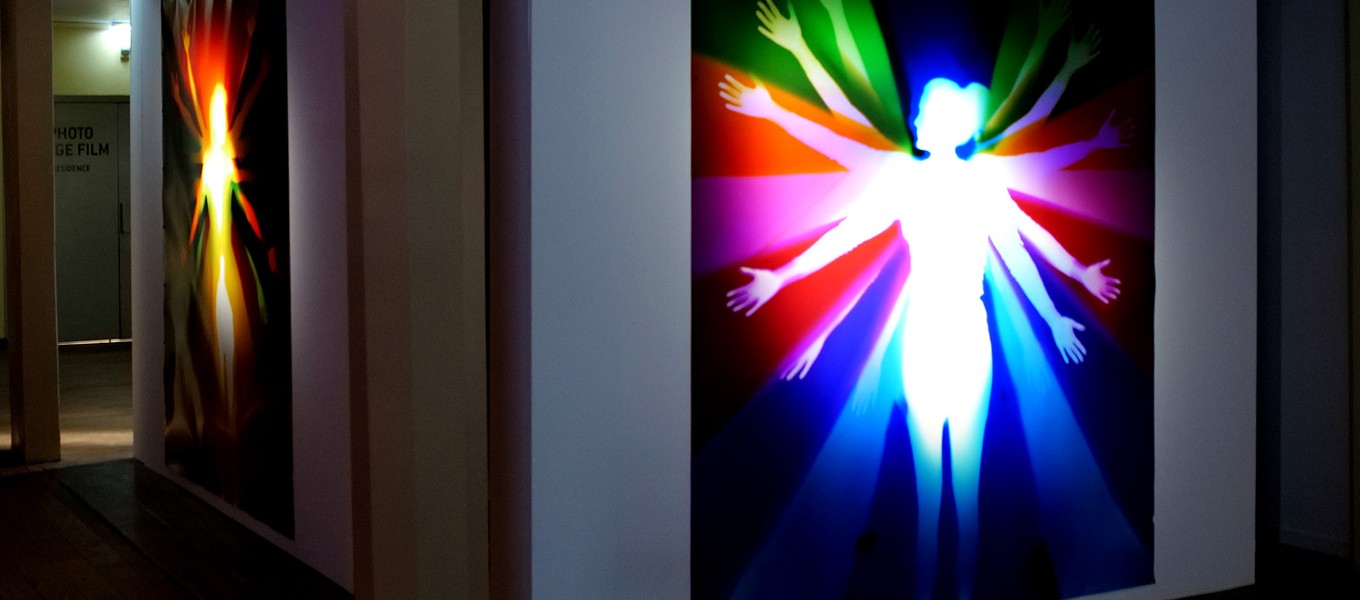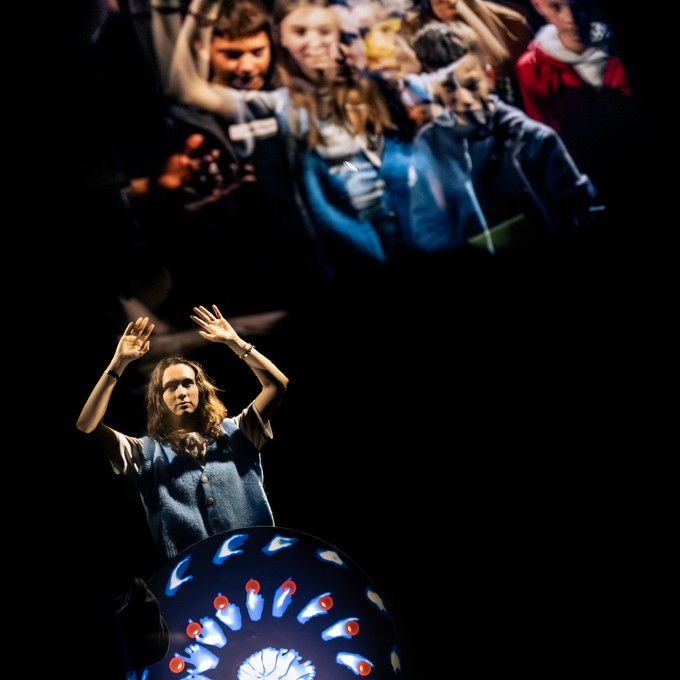Ethann Néon
Le Stréphochronoscope - Installation - 2024
presented as part of the exhibition Panorama 26



When a person looks into a mirror, they seethemselves two nanoseconds younger – that being the time it takes for light totravel the distance between the mirror and the eye. But what would happen if thespeed of light slowed? The strephochronoscope1 a newkind of interactive optical device, plays with the properties of the mirror.Raising the question of how we perceive time, the installation invites us tostand in front of a “crystal” mirror2
on which stroboscopic waves conjure up virtualreflections of the past. All spectators have to do is activate thephenakistiscope – an optical toy placed on a rotating axis –to bring the mirrorto life. Over time, the ghosts of previous participants become imprinted on theshimmering surface.
This installation pays tribute to pre-cinema intwo ways. Firstly, it evokes an optical instrument, the phenakistiscope,invented by Joseph Plateau in 1832. Now a scientific toy for many children, thephenakistiscope deploys cyclical animation in the moment, like a sudden burstof movement that is specific to present, actual time. At the same time, achronophotographic effect recalls the scientific work of Étienne-Jules Marey onbreaking down movement. This technique reveals spectral images of a barely-pastpast that is still contemporaneous with the present of the action.
The Strephochronoscope thus combines the fun of the optical toys with a morephilosophical reflection on time, articulated through the perception thatscientific tools can provide.
1 Neologism formed from the Greek stréphô (to turn), chronos (time),and skopein (to examine).
2 This term is a reference to the concept of the crystal-imageformulated by Gilles Deleuze in his second book on cinema.
Ethann Néon
Ethann Néon lives and works in Brussels, where he studied animated film. His experimental films, photographs and installations focus on the representation of time in images. His current practice focuses on the processes of reconstructing memory and the visual concatenation of time, as well as on visual loss.
Production
Partner
Credits
› Programmation : David Lemaréchal
› Pôle installation : Benjamin Menery, Claire Pollet, Cyprien Quairiat, François Bedhomme, Hadrien Téqui, Julie Machin, Sébastien Cabour
› Pôle prise de vue : Aurélie Brouet, Solène Secq, Théo Coeugniet
› Pôle son : Antoine Sugita, Blandine Tourneux
› Pôle post-production : Alexandre Peschmann, Thibaut William
› Chargée de production : Barbara Merlier
› Accompagnement artistique : Roque Rivas
